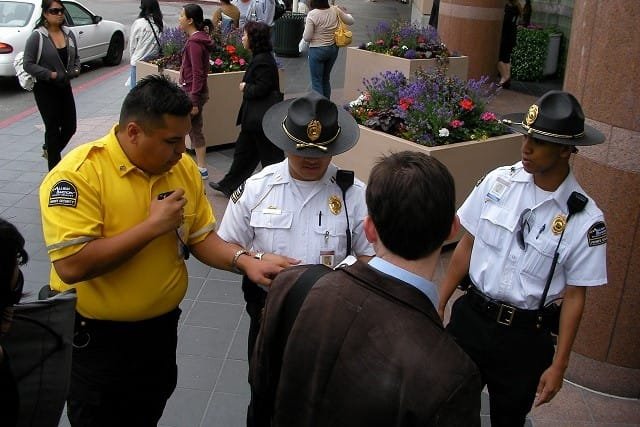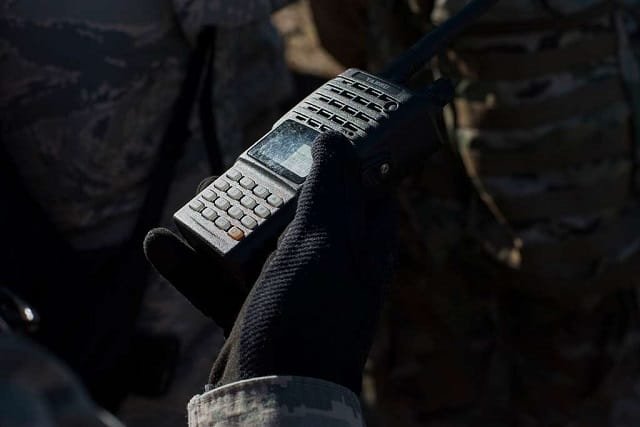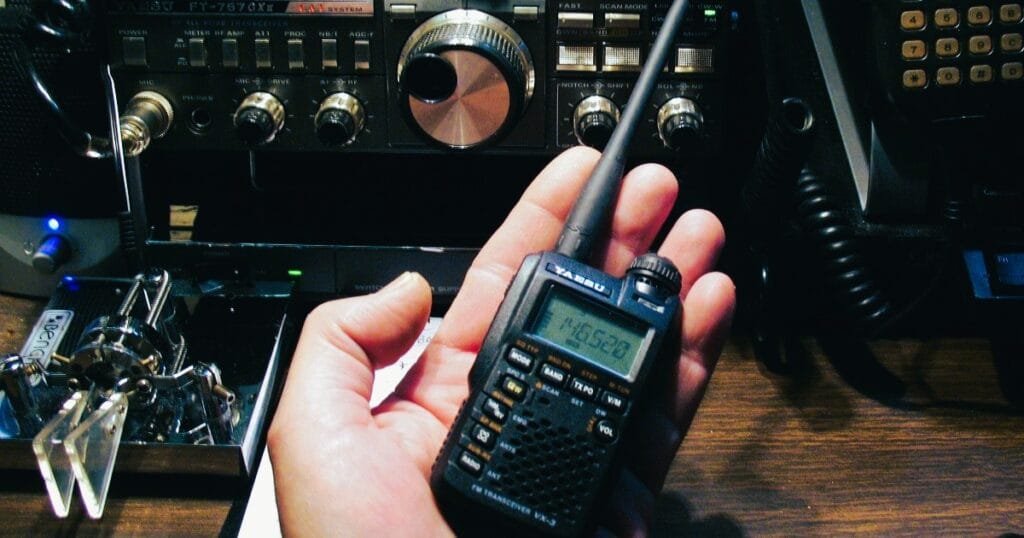Table of Contents
ToggleWhy Am I Hearing Strangers on My Walkie Talkie? Cross Channel Interference
Have you ever picked up your walkie-talkie, expecting to converse with a buddy, only to hear total strangers? Recently, a buddy contacted me about this same issue. He was on the same channel and frequency as his contact, but he found himself listening in on intriguing discussions from others. As you might expect, it was annoying and complicated. This perplexing event made me wonder about the underlying causes. So, let’s look at why you might be hearing unexpected voices on your walkie-talkie and how to fix this cross-channel interference issue.
Cross Channel Interference and Communication Barriers
When it comes to walkie-talkies, there are two main reasons why you could hear strange voices: cross-channel interference and one-way communication hurdles. Both of these can interfere with your capacity to have clear, private talks; but, understanding how they function might help you overcome the problem.
Cross Channel Interference: The Usual Suspect

Imagine you’re all set on your walkie-talkie, blissfully chatting away on channel 02, when someone else’s voice interrupts your discussion. What’s happening? Welcome, you are now in the world of cross-channel interference.
Walkie-talkies use commonly accessible radio frequencies for communication. Interestingly, if anyone in your coverage area uses the same frequency as your ham radio, they can listen and talk to you, whether they want to or not. This occurs due to the fact that radio waves are limitless and may go somewhere.
So, why is this happening? Many times, this will mean that someone in the area is on the same channel as you are. Even with a consumer radio capable of 22 channels, users often find multiple groups operating on just one. By the way, unless they are standing right on top of the car (which would give them away), you will be able to hear it over your walkie-talkie. So what we have here is a textbook case of cross-channel clutter.
But don’t panic; there are techniques to combat these unwelcome eavesdroppers.
Changing the Frequency: The Simple Solution
To avoid cross-channel interference, just change the frequency or channel on your walkie-talkie. Consider changing the radio station in your car—if one channel is full of static, simply switch to another, clearer one.
Some handheld walkie-talkies allow you to change frequencies by selecting a channel or putting in the new frequency manually via their software. This is a fast, effective option if you can afford to do it. Put them on a new radio frequency, and you are good to go. No more mysterious voices.
However, not all gadgets have this freedom. Some walkie-talkies, particularly ones developed for specific uses or localities, have a limited range of frequencies. So, what happens if changing frequencies is not an option?
Want to know which frequency is better—VHF or UHF? Learn here.
Using CTCSS and DCS: The High-Tech Fix
Even if you can’t adjust the frequency, you can still exclude those annoying extra voices by using privacy codes (sometimes called CTCSS or DCS). These work by introducing a distinctive sound or code to your voice. This makes your walkie-talkie only respond to signals with this particular tone or code, hence no matter another party also tunes into the same frequency channel but with a different CTCSS/DCS settings, their talk on radio signal will not be transmitted until they set the identical CTCSS/DCS code as yours.
Almost like a secret handshake—your buddies agree on it, and anyone who doesn’t know shouldn’t come close. Some of the latest walkie-talkies come with these built-in features so that you can just turn them on, set it up and listen to something other than endless noise over the channel.
What is the difference between CTCSS vs DCS Privacy Codes? Click here to know in detail.
One Way Communication Barriers: The Other Piece of the Puzzle

Now, let me tell you the 2nd most important reason why you might hear voices on your channel: By one-way communication restrictions. This gives it half-duplex communication, which walkie-talkies operate on. This means that many devices can connect to the same channel, however, that only one person can be speaking at a time.
It goes like this here, you push a PTT (Press to Talk) button and talk — everyone else, if they want etc., has his/her time to respond. Think of it as a friendly conversation where we all listen and take turns speaking. Here is the catch though: without following this protocol, mayhem will ensue.
So what happens if this system fails? If someone attempts to broadcast when another person is already speaking, their message may interfere with the current transmission. This causes what I like to term “cross-voice” interference. Voices mingle, signals get muddled, and no one can tell what’s going on. It’s similar to how two individuals talk over each other at the same time, but this time it’s over the radio.
To avoid this, everyone using the walkie-talkie must understand how it works. Ensure that users wait for communications to complete before replying. It’s also worth checking to see whether anyone’s PTT button is stuck, as this might cause the radio to transmit continuously. If this occurs, it basically disables all incoming signals, leaving you with a one-way ticket to silence (or turmoil if others attempt to communicate).
Cross Channel Interference vs. One Way Barriers: Know the Difference
Cross-channel interference is often confused with one-way communication obstacles since both result in unexpected voices. However, they are not the same. Cross-channel interference occurs when other people’s talks intrude on your frequency, whereas one-way communication obstacles arise when users on your own channel fail to follow appropriate transmission procedures.
Understanding the distinction can help you select the best option. If you hear someone you don’t recognize, it’s most likely due to cross-channel interference. If the voices belong to members of your group, but they are talking over each other, you have a communication barrier.
When All Else Fails: Time to Troubleshoot
Even if you modify the frequencies or use privacy codes, you may still have troubles. This might indicate a larger problem, such as malfunctioning equipment. Defective circuits, faulty antennae, or even obsolete software can all cause unexpected interference or poor connection.
Now, have you tried everything we discussed, and the problem is still there? Then, maybe it’s time to check your equipment. Check for symptoms of damage and, if feasible, update the firmware on your walkie-talkie. If everything else fails, consider reading a ham radio review or seeking guidance from a professional.
The Role of Environment in Walkie Talkie Interference

While cross-channel interference and communication hurdles are important considerations, environmental variables can also have a huge impact. Physical surroundings, such as buildings, trees, and even weather, can impair walkie-talkie signals, resulting in interference or poor connection quality.
For example, metropolitan surroundings with towering buildings can create signal reflections, resulting in “multipath interference.” This is where the signal bounces off objects and enters the receiver via many routes, distorting the audio. In deep woods or steep terrains, however, the signal may be completely absorbed or blocked, causing communication problems.
Take into account the following ideas to lessen the impact on the environment:
Elevate yourself: Move to a higher level of height possible for improved line-of-sight communication.
Eliminate the Obstacles: Stay away from buildings or thick foliage when sending data.
Weather conditions: Not always but sometimes extreme weather like serious thunderstorms can produce extra electromagnetic interference which can impact your normal radio transmission. According to our present weather condition, we should set up our transmitting device and systems to support it. Sometimes a little power up can help, sometimes a perfect antenna works.
Isn’t the environment that important? Well you then ought to find out how one walkie-talkie connects with another walkie-talkies. Click here for details.
Walkie Talkie Channels: Are They Really Private?
One widespread fallacy is that simply because you’re using a certain channel means your discussion is confidential. Unfortunately, this is not the case with most consumer-grade walkie-talkies. These gadgets use open frequencies, so anybody within range may tune into. This is why cross-channel interference is such a common problem: there is no encryption or security to keep others from listening in.
For individuals seeking more secure communication, several higher-end walkie-talkies include encryption capabilities. These devices encrypt your message, making it more difficult for outsiders to intercept or interpret your chat. However, encryption has a cost, both monetarily and in terms of complexity. These gadgets are typically more costly and may need necessary license or certification to function lawfully.
Regulation & Licensing: Knowing The Rules
And while on the topic of legality, take some time to learn what you need in terms of licensing and walkie-talkie use regulations for your area. For example, in the US some frequencies like GMRS (General Mobile Radio Service ) are exempt from a number of other legal requirements which would normally be applicable. The usage of these frequencies without a license will usually result in fines.
Individual nations have different laws and before you travel you must be well-versed with those which apply to where you are. In some cases, certain frequencies may be set aside for emergency services and inadvertently talking on these frequencies can have disastrous implications.
We should always respect radio communication laws and regulations of the area where we are transmitting and receiving the radio waves. By following rules and regulations of local laws, it not only ensures compliance, but also makes us safe from the risk of interfering with critical communications.
Final Thoughts: Keeping Your Conversations Clear
Hearing strangers on your walkie talkie channel is never enjoyable, but knowing the causes behind this might help you address the issue front on. There are several options to keep your talks clean, including dealing with cross-channel interference by changing frequencies, establishing CTCSS or DCS codes, and simply training your company on good one-way communication.
Keep in mind that although the frequencies are universal, your channel is not. In order to have a smooth and free interference walkie-talkie experience, you should follow the correct steps. And when in doubt, ask for help from a ham review. Happy communicating!


